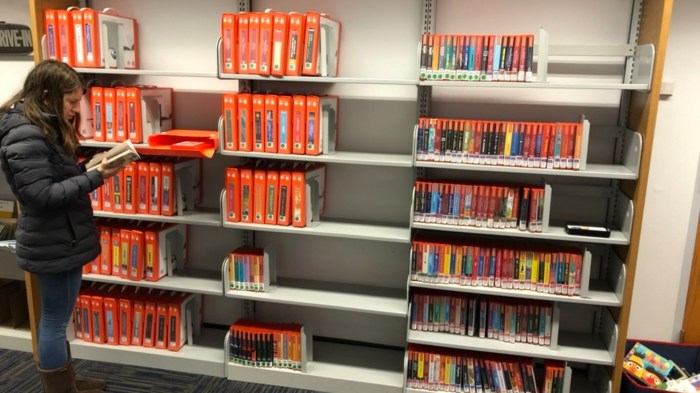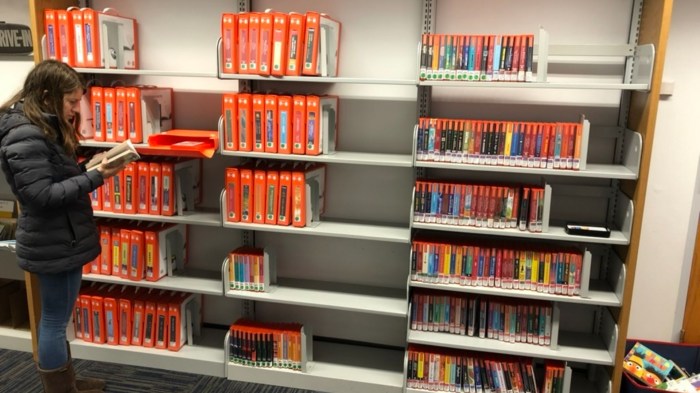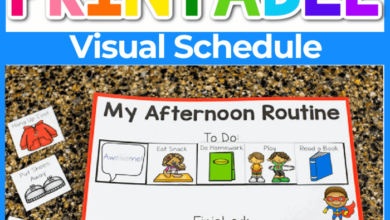
Getting Kids Excited to Read Again: A Fun Journey
Getting kids excited to read again is a challenge many parents face. It’s easy for kids to get caught up in screens and other distractions, but reading is a vital skill that can open doors to a world of knowledge and imagination.
This journey of rekindling a love for reading requires a little creativity, patience, and a dash of fun.
This blog post will explore common reasons why children lose interest in reading, how to recognize the signs of reading disinterest, and strategies for rekindling that passion. We’ll also delve into fun and interactive ways to make reading enjoyable, connecting reading to real-life experiences, and establishing consistent reading habits.
Understanding the Reading Slump: Getting Kids Excited To Read Again

It’s natural for children to go through periods where their enthusiasm for reading dips. This can be a temporary phase or a more persistent issue, but understanding the reasons behind it is crucial to encourage their love for reading.
A decline in reading engagement can have significant implications for a child’s academic progress and overall development. It can impact their vocabulary, comprehension skills, and even their ability to express themselves effectively. In the long run, it can hinder their educational journey and limit their potential in various fields.
Recognizing Signs of Reading Disinterest
Identifying the signs of reading disinterest is the first step towards addressing the issue. These signs can be subtle or overt, and it’s important to be observant and responsive.
Sometimes, getting kids excited to read again requires a little creativity. Maybe ditch the usual routine and try something new – like wearing something unexpected to read aloud in! It’s a fun way to break the monotony and make reading feel like a special occasion.
The element of surprise can spark their curiosity and make them eager to join in the adventure.
- A noticeable decrease in the frequency and duration of reading.
- Reluctance to pick up a book or participate in reading activities.
- Complaints about boredom or difficulty with reading.
- Choosing other activities over reading, such as watching TV or playing video games.
- Lack of engagement with the content of the book, such as difficulty recalling details or making connections.
Rekindling the Love of Reading

After understanding the reasons behind a child’s reading slump, the next step is to reignite their passion for books. This involves creating a positive reading environment, introducing engaging books, and tailoring reading experiences to their individual preferences. By fostering a love for reading, we can empower children to become lifelong learners and enjoy the boundless world of literature.
Sometimes, getting kids excited to read again requires a little creativity. Maybe a cozy reading nook with a comfy beanbag chair will do the trick, or perhaps a fresh coat of paint and some inspiring wall art will spark their interest.
If you’re looking for some unique ideas, check out these 21 stunning wall decor ideas – they might just be the key to unlocking a love of reading in your little ones!
Engaging Books to Spark Interest
Introducing children to books that pique their curiosity and align with their interests is crucial in rekindling their love for reading. Here are some suggestions for age-appropriate books that can ignite their imagination and make reading an enjoyable experience:
- For younger children (ages 4-7):
- The Very Hungry Caterpillarby Eric Carle: This classic story features vibrant illustrations and a simple plot that is perfect for young readers.
- Where the Wild Things Areby Maurice Sendak: This imaginative tale takes readers on a journey to an island inhabited by wild creatures, fostering a love for adventure and creativity.
- Click, Clack, Moo: Cows That Typeby Doreen Cronin: This humorous story about cows who learn to type will appeal to children who enjoy silly and relatable characters.
- For older children (ages 8-12):
- The Chronicles of Narniaby C.S. Lewis: This fantasy series transports readers to a magical world filled with talking animals, mythical creatures, and timeless lessons.
- The Magic Tree Houseseries by Mary Pope Osborne: This adventure series follows two children who travel through time and history using a magical tree house, igniting a passion for exploration and discovery.
- Diary of a Wimpy Kidby Jeff Kinney: This humorous series follows the daily life of a middle school boy, providing relatable experiences and witty observations that resonate with young readers.
- For teenagers (ages 13-18):
- The Hunger Gamestrilogy by Suzanne Collins: This dystopian novel explores themes of survival, rebellion, and the power of love, captivating teenagers with its fast-paced plot and compelling characters.
- The Fault in Our Starsby John Green: This heart-wrenching story about two teenagers battling cancer explores themes of love, loss, and finding meaning in life, resonating with teenagers who are navigating complex emotions.
- Divergenttrilogy by Veronica Roth: This dystopian novel follows a young woman who discovers she doesn’t fit into any of the predetermined factions in her society, igniting a desire for freedom and self-discovery.
Creating a Positive Reading Environment
A supportive and encouraging environment can significantly impact a child’s reading habits. Here are some tips for creating a positive reading environment:
- Make reading a family activity:Read aloud together as a family, allowing children to witness the joy and benefits of reading.
- Create a designated reading space:Provide a comfortable and inviting space where children can relax and enjoy their books, free from distractions.
- Limit screen time:Encourage children to spend more time reading instead of watching television or playing video games.
- Make reading accessible:Ensure that a variety of books are readily available, catering to different interests and reading levels.
- Celebrate reading milestones:Acknowledge and praise children’s reading accomplishments, reinforcing their positive experiences.
Tailoring Reading Experiences to Individual Preferences
Every child is unique, and their reading preferences will vary. Recognizing and respecting these individual differences is crucial in fostering a love for reading. Here are some ways to tailor reading experiences to individual preferences:
- Encourage exploration:Allow children to choose books that interest them, fostering a sense of autonomy and ownership over their reading experiences.
- Provide diverse genres:Introduce children to a wide range of genres, from fantasy and adventure to mystery and science fiction, to broaden their literary horizons.
- Consider reading levels:Select books that are appropriate for their reading level, ensuring a balance between challenge and success.
- Offer alternative formats:Explore audiobooks, graphic novels, and digital books to cater to different learning styles and preferences.
- Create reading challenges:Engage children in reading challenges, such as reading a certain number of books or completing a book club, to make reading more interactive and fun.
Making Reading Fun and Interactive
Reading should be an enjoyable experience for children, not a chore. When kids are engaged and excited about reading, they are more likely to develop a love of books and improve their reading skills. Here are some fun and interactive ways to make reading more appealing to children.
Designing Games and Activities
Engaging children in games and activities that encourage them to explore new books can make reading more enjoyable. Here are some examples:
- Book Bingo:Create a bingo card with different book-related categories, such as “a book with a talking animal,” “a book set in a different country,” or “a book with a mystery.” Children can read different books and mark off the squares as they find books that fit the categories.
The first person to get a bingo wins a prize.
- Book Scavenger Hunt:Hide clues around the house or classroom that lead to different books. Children can follow the clues to find the books and learn about new stories.
- Storytelling with Props:Encourage children to use props to act out their favorite stories. This can help them to visualize the characters and events in the book and develop their storytelling skills.
Organizing Reading Challenges and Contests
Reading challenges and contests can motivate children to read more and foster a sense of competition.
- Reading Logs:Children can track their reading progress by keeping a reading log. They can record the titles of the books they read, the number of pages they read, and their thoughts about the books. This can help them to see how much they are reading and motivate them to read more.
Sometimes, getting kids excited about reading again takes a little creativity. Instead of just handing them a book, why not let them personalize their own reading nook? I found some fun printable binder covers to color that they can use to decorate their reading folders.
They’ll love having a unique space for their favorite stories, and it might just inspire them to pick up a book again.
- Reading Goals:Set reading goals for children, such as reading a certain number of books in a month or reading for a certain amount of time each day. This can help them to stay focused on their reading and make progress towards their goals.
- Reading Incentives:Offer incentives for children who reach their reading goals, such as small prizes, extra playtime, or special privileges. This can help to make reading more rewarding and encourage children to continue reading.
Creating Book Clubs, Getting kids excited to read again
Book clubs provide a platform for children to discuss their favorite stories, share their thoughts, and connect with other readers.
- Choose Books Together:Allow children to vote on the books they want to read in the book club. This gives them a sense of ownership and encourages them to participate actively.
- Facilitate Discussions:Prepare discussion questions that encourage critical thinking and analysis of the books. For example, “What was the author’s message in this book?” or “How did the characters change throughout the story?”
- Organize Activities:Plan activities related to the books, such as book-themed crafts, games, or field trips. This can help to make the book club more engaging and fun.
Connecting Reading to Real Life
Reading isn’t just about sitting down with a book and flipping pages. It’s a skill that can be applied to everyday situations, making life more engaging and enriching. By showing children how reading connects to their world, we can rekindle their love for the written word and help them see its practical value.
Connecting Reading to Children’s Interests and Hobbies
Children are naturally curious and enthusiastic about their interests. Tapping into these passions can make reading more appealing and relevant. For instance, if a child loves dinosaurs, introduce them to books about paleontology, prehistoric life, or even fictional stories featuring dinosaurs.
This approach makes reading a fun and rewarding experience, as it aligns with their existing interests.
Encouraging Reading Habits
Encouraging children to develop a love for reading is crucial for their academic success and overall development. By establishing consistent reading routines, providing incentives, and sharing the joy of reading, we can help children cultivate a lifelong habit of reading.
Creating a Reading Schedule or Routine
A consistent reading schedule helps children develop a regular reading habit. By setting aside dedicated time for reading, children learn to prioritize reading and make it a part of their daily routine.
- Establish a specific time for reading:Choose a time that works best for your child, whether it’s before bed, after school, or during a quiet time in the day. Consistency is key.
- Create a dedicated reading space:A comfortable and inviting reading nook can make reading more enjoyable. Ensure the space is well-lit and free from distractions.
- Incorporate reading into daily activities:Read aloud during mealtimes, car rides, or before bedtime. This helps normalize reading and makes it a natural part of your child’s day.
Providing Incentives or Rewards
Rewards can motivate children to read more. By recognizing their reading accomplishments, we encourage their efforts and make reading more rewarding.
- Reading logs and charts:Encourage children to track their reading progress using charts or logs. They can record the number of pages read, books completed, or time spent reading.
- Rewards for reading goals:Set achievable reading goals and reward children for reaching them. Rewards can be small, like a new book, a trip to the library, or a special treat.
- Family reading challenges:Organize fun reading challenges within the family, such as reading a certain number of books together or reading a book aloud to each other.
Sharing Personal Stories About the Joy and Benefits of Reading
Sharing personal stories about the joy and benefits of reading can inspire children to embrace reading. By highlighting the positive experiences you’ve had with reading, you can instill a love for reading in your child.
- Talk about your favorite books:Share your favorite books and explain why you enjoy them. Discuss the characters, plot, and themes that resonate with you.
- Discuss how reading has helped you:Share how reading has expanded your knowledge, improved your vocabulary, and helped you connect with others.
- Create a family reading tradition:Establish a tradition of reading together, such as reading aloud during family time or discussing books you’ve read individually.






